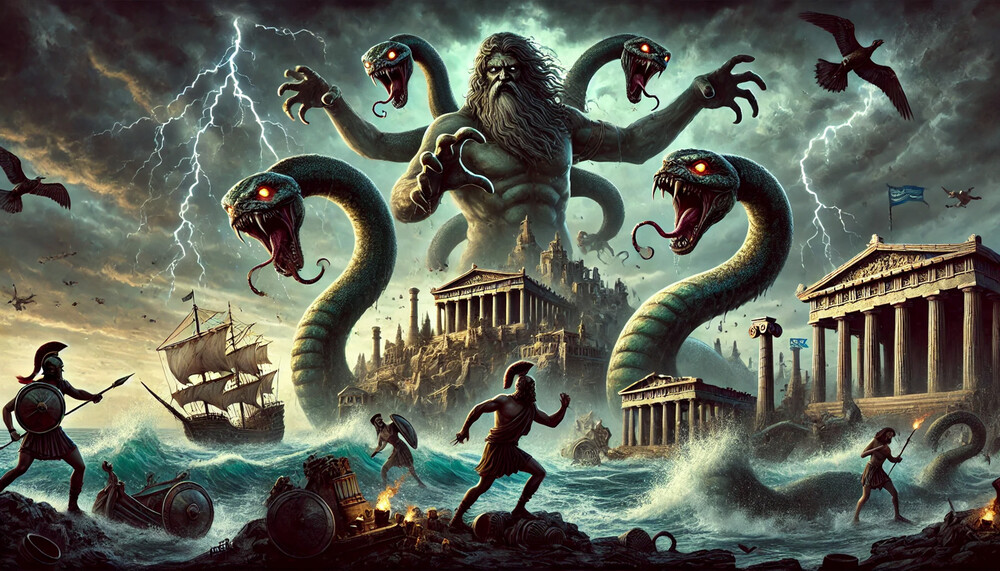Scylla
Among the most repulsive creatures of ancient Greece was undoubtedly Scylla. This monster boasted six heads and twelve legs. Scylla's home was the Strait of Messina, a narrow passage between Sicily and the Italian Peninsula.
For this reason, her diet consisted mainly of sailors who were foolish enough to sail these waters. Scylla was not alone in killing these unfortunate sailors. Not far from her lived Charybdis, who was also a notorious monster according to the myths.
These two beasts were responsible for a large number of victims. Essentially, only the ship of the Argonauts and Odysseus' crew managed to escape them.
However, Scylla was not originally a monster but a very beautiful girl. But beautiful girls don't have it easy in Greek myths, and Scylla was no exception.
She was transformed into her monstrous form by the sea nymph Amphitrite, the wife of the sea god Poseidon, out of jealousy.
Cyclopes
Most people are familiar with the Cyclopes. According to Greek myths, they were giants with a single eye in the middle of their foreheads. Their parents were gods, specifically the sky god Uranus and the earth goddess Gaia.
The Cyclopes' home was Hyperia, where they mostly lived in caves. The most famous Cyclops was Polyphemus, who had an encounter with Odysseus.
The Cyclopes were allies of the god Zeus, helping him overthrow the Titans. They forged thunderbolts and lightning for him, enabling the king of the gods to defeat his Titan father, Cronus. They also created the helmet of invisibility, which was commissioned by Hades, the god of the underworld.
However, the Cyclopes were not on good terms with all the gods of the Pantheon. For example, Apollo did not have much love for the Cyclopes because they had made the thunderbolts with which Zeus killed Apollo's son, Asclepius. The sun god then massacred the Cyclopes in revenge.
Medusa
Greek mythology introduces us to Medusa as a monster with snakes for hair, whose gaze could turn anyone to stone. Medusa was defeated by Perseus, mainly thanks to a shiny shield through which he could see her position without turning into a stone himself.
Perseus beheaded Medusa. He then used her head to defeat the giant Atlas and turned King Polydectes into stone with it as well.
Like Scylla, Medusa was not ugly from birth, quite the opposite. However, she was seduced by Poseidon in the temple of the goddess Athena, for which the goddess transformed her into a hideous murderous beast.

